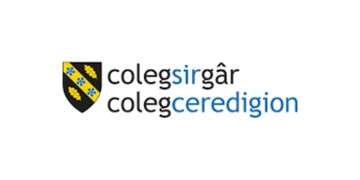The government’s chief medical officer told MPs today that teaching isn’t a “high risk” occupation, following questions over whether schools should stay open during the new national lockdown.
However, Professor Chris Whitty didn’t answer whether he believes the R rate – the transmission of the coronavirus – will be able to fall below 1 with schools remaining open. The government is yet to provide guidance on any additional measures for schools during the lockdown, but minsters have pledged they will stay open.
Whitty said there was “quite a lot of consensus” the transmission in primary schools was relatively small, with “more debate” about the role of secondary schools.
But he said given the “huge benefits to children” of keeping schools open, the question is “what is the right balance for society? That in my view is fundamentally a political question. The benefits to children are really clear.”
It comes as the National Education Union wages a high-profile campaign for schools to be closed during the national lockdown, due to start on Thursday.
The union announced today it has launched an app to make it easier for teachers to escalate covid concerns and take action in their schools, alongside a “major national advertising campaign across this country asking the constituents of MPs to ask them to #PutSchoolsInTheLockdown”.
However Whitty highlighted that, while the data was not “absolutely overwhelming”, international and Office for National Statistics (ONS) studies “do not imply that teachers are a high risk occupation, unlike for examples social care workers, medical staff and others who when they go into work have an increased risk”.
He said the rates of transmission by the ONS for teachers look “almost identical to the communities they are drawn [from]”. However he warned the data can “move on”, but said this was his judgment at this time.
He also repeated previous statements that the benefits to pupils being in school mean, on balance, “our view is firmly for children to be in school”.
NEU analysis of ONS data show the rate of coronavirus transmission since the start of September is 50 times in secondary schools (it has risen from 0.04 per cent to 2 per cent). The rise in primary is much lower, although it has increased nine-fold over the same period.
The union claimed yesterday over 150,000 teachers and support staff backed its calls for schools to be closed during the lockdown, with a rota operation then introduced in secondary schools.
Kevin Courtney, the NEU’s joint general secretary, said: “This Government has been cutting corners and taking half measures on Covid, and a second lockdown is the result. They have failed heads, teachers, support staff, parents and pupils.
“Schools, clearly, are an engine for virus transmission. The lockdown would be much more effective in reducing virus levels if schools and colleges were a part of it.”
But headteacher unions back the government’s pledge to keep schools open, with teachers also seemingly favouring moving to a rota system or educating fewer year groups – rather than full closure.
Whitty was appearing before MPs on the Science and Technology Committee today, convened to look at the evidence behind the new lockdown measures, alongside Sir Patrick Vallance, the government’s chief scientific adviser.








OFSTED posted “During the national lockdown we will undertake our work remotely where we can – only going on site where it is necessary to do so, or in response to urgent concerns.”
Why?
HMG Chief Medical Offer Whitty highlighted that, while the data was not “absolutely overwhelming”, international and Office for National Statistics (ONS) studies “do not imply that teachers are a high risk occupation, unlike for examples social care workers, medical staff and others who when they go into work have an increased risk”.
Leadership in these difficult times needs to be consistent and transparent.
Teaching doesn’t need to be a high risk occupation for it to be sensible to try and reduce any chance of infection. However low risk your occupation, the sensible thing is to try and reduce person-to-person contact. I don’t see any inconsistency here.
To make such a comment he has obviously no regard for our profession that of teaching and supporting learners and understands nothing about what we do for our learners to achieve especially with the present situation in which we find ourselves. These people need to take a real look at what is actual going on, the day to day struggle . Get off your perch and start living in the ral world
Mr. Watson! Reallly? 0850 to 1530 in a room with 30 children and three adults. Five days a week but said adults can’t go to the gym after work!
You don’t see inconsistency in a GP only giving telephone calls if one is lucky because their surgery is ‘locked down’. However schools have hundreds or thousands of children and commensurate staffing deemed to be low risk?
Dentists shut. School sick bays cracking on!
Hairdressers shut. First aid administered at school.
Clothes shops shut. PE carrying on in school.
Pubs shut – school canteens open.
There may well be a case for all of the above being ‘safe’ and indeed ensuring we ‘save the NHS’.
However it is not convincingly articulated at best or just not the case at worst.
Hang on, hang on, I never said I agreed that teachers were not high risk.
You said that Ofsted not going into schools in person was inconsistent with Whitty’s position that teachers were not a high risk occupation.
I was merely saying that whatever level of risk teaching is, minimising personal contact where feasible is a good idea. So if anyone working with schools, be it Ofsted or anyone else, can do their job without coming onto school premises then that is sensible.
Mr. Watson. The point I am trying to make is if ‘we are all in it together’ – if Lockdown2 is to achieve the level of consent it needs to be successful then leadership of it needs to transparent and consistent.
You make a good point but inevitably this will be seen as children and staff get on with it -precious inspectors – stay home – stay safe.
That is not really my view. However, that is how it looks and sounds to many. Leadership needs to understand and work the optics better for a better chance of success.
I see your point. Playing devil’s advocate, one could say that keeping inspectors off school premises is a way to lessen the risk of teachers/children catching something from the inspectors (who of course would be travelling from school to school, thereby exposing School B to whatever they picked up at School A).
The problem we have is that this is not binary. If the only important thing was reducing Covid, then the answer is simple – full and total lockdown until it’s no longer a threat. Even that isn’t straightforward though – how do people eat, what are the jobs that can’t be done without etc.?
But that’s not reality. You can see the problem in the enormous range of views, even on these boards. “Schools must close” cries sit right next to “Schools must stay open”. Covid worries come up against mental health, the widening attainment gap etc. And as unpalatable as it may be, you have wider societal/economic factors – what impact does it have on the country if children aren’t at school and need care/educational support from someone who might otherwise be working?
History will judge whether keeping schools open was the right or wrong call. (And even then there’ll probably be massive differences in opinion). But if they are to be open then it makes sense to take whatever steps we can to reduce whatever risk there is to teachers and children.
Is the Chief Medical Officer volunteering to have thirty disaffected teenagers sneezing over him during the last lesson on a Friday afternoon?
If schools and colleges are not closed then the lockdown will go on longer.
Should lives be sacrificed for the macho posturing of the government? “Die for Boris’s bravado” is not a good election slogan.
“However, Professor Chris Whitty didn’t answer whether he believes the R rate – the transmission of the coronavirus – will be able to fall below 1 with schools remaining open. ”
Its not a question of whether R will be able to fall below 1 with schools remaining open. It will fall. R naturally falls. Its basic Mathematics.
If you take measures to make R fall faster than its natural rate then when those measures are lifted R will rise. If no measures are taken it will fall more slowly but will not rise after.
Restrictions were lifted over the summer and then the R rose. Then they stopped lifting restrictions and it began to fall.